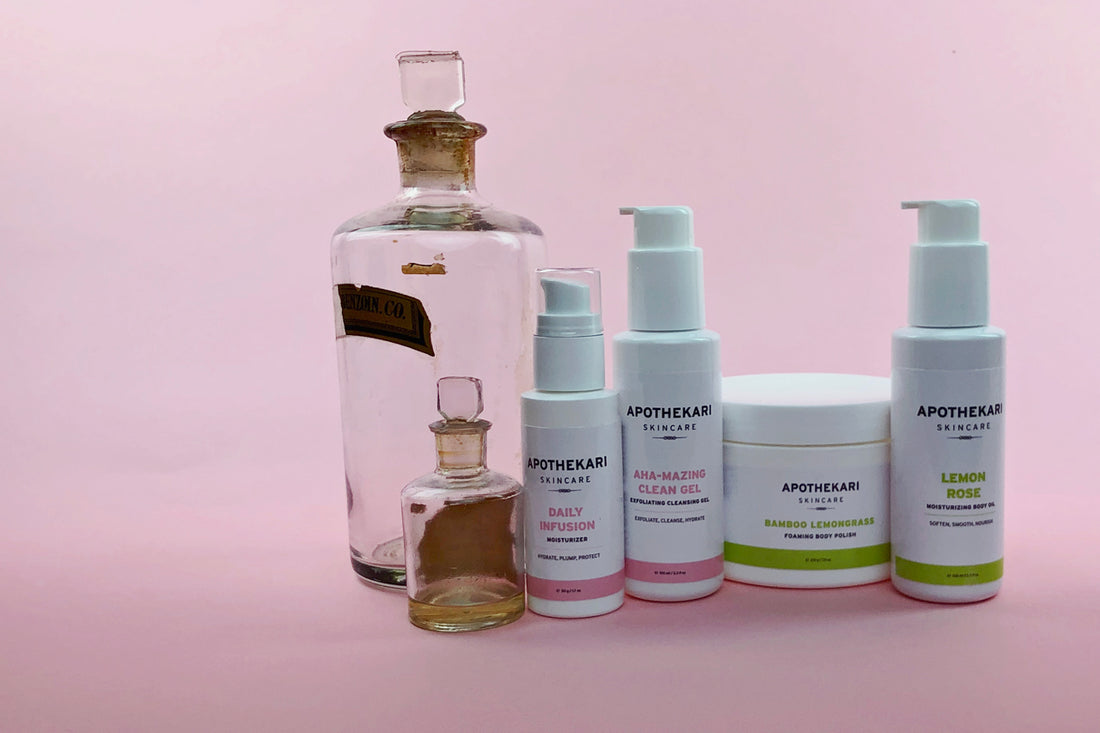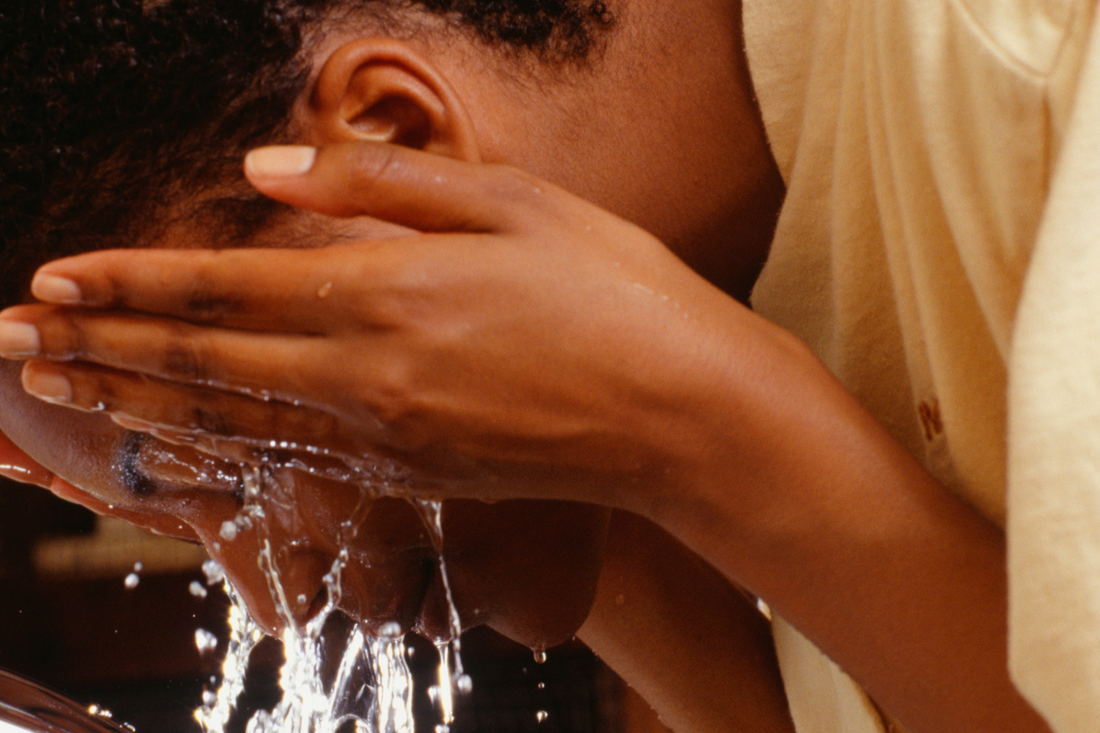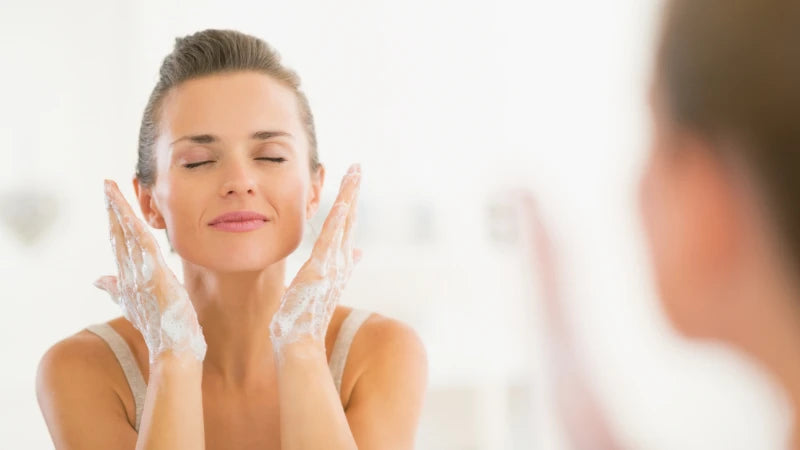Blog
Celebrate Softer Skin With This Set!
Celebrate softer skin! Whisk away dryness leaving silky, smooth skin with these exfoliating and moisturizing face and body products. Shop All Apothekari What Makes Skin Feel Rough & Dry? Softer skin is something we all desire, yet many of us experience skin that is rough, dry and sometimes painful. Dry skin can occur anywhere on the body, but certain areas are more likely to become very dry or even rough and cracked. Dryness tends to occur gradually, starting to feel tight and somewhat rough but then progressing to increased tightness, roughness, cracking and itching. Skin may also start to flake. When the dryness penetrates into the deeper layers of skin, skin starts to feel very rough. Frequent washing, extreme temperatures, dry air and hot baths can contribute to dryness. Our genes, age and hormone levels also play a role. What we eat along with medications we take may also lead to dry skin. Exfoliate & Moisturize for Softer Skin Having soft skin requires minimizing exposure to factors that contribute to rough, dry skin: Avoid dry air by spending less time outdoors in hot and cold weather, and by using a humidifier indoors when the heating is on Reduce the time spent in hot water by having quick showers instead of long baths Use gloves when washing dishes to minimize contact with hot water and strong detergents. Your skincare routine plays a role – stick to gentle products, especially avoiding harsh, stripping cleansers. It’s important, as well, to exfoliate and then moisturize. Exfoliation helps to remove the dead, dry skin cells that sit on the skin’s surface causing it to look and feel rough and which can slow down the absorption of products you put on top. Moisturizing helps to deliver hydration to skin, locking in moisture. Our Soft Skin Set includes four products that both exfoliate and moisturize to deliver soft, silky skin on your face and body: Daily Infusion Moisturizer. Hydrate, plump and protect facial skin with this light, non-greasy formulation that is suitable for all skin types AHA-Mazing Clean Cleansing Gel. Cleanse and soothe skin; prep it for other products with this gentle exfoliating cleanser Lemon Rose Moisturizing Body Oil. Instantly transform dry body skin into soft, supple skin with this ultra-moisturizing and rich body oil Bamboo Lemongrass Foaming Body Polish. Punch up the smoothness and pamper your skin with an invigorating exfoliating body polish. Who’s ready for softer skin this winter?
Learn moreAn Exfoliating Face Cleanser for Summer
Our exfoliating face cleanser, Apothekari AHA-Mazing Clean Exfoliating Cleansing Gel, is ideal not only for summer, but year round. Regular use will help to keep skin feeling soft and smooth. And, we may be slightly biased, but we have to confess that we are quite partial to its refreshing and soothing mint scent! Shop Aha-Mazing Clean Gel Cleanser Exfoliation is the process of removing dead skin cells from the outer layer of your skin. A build up of these cells can leave skin looking flaky, dry and even more wrinkled. They can also interfere with the absorption of active ingredients that you apply after. For these reasons, it’s important to remove these skin cells and an exfoliating face cleanser can help. Most skin types benefit from exfoliation if it’s done properly. However, certain skin types, such as sensitive skin, may not be able to tolerate products that exfoliate. In this case, it’s important to do a patch test first to avoid unpleasant side effects such as stinging, burning, redness or irritation. Two Ways To Exfoliate There are two main ways to exfoliate skin at home – mechanically or chemically. Both are safe and effective, and it really comes down to a matter of preference. Mechanical exfoliation involves the use of a tool such as a brush, a sponge or a scrub to help remove the dead skin cells. Chemical exfoliation relies on the use of chemicals such as alpha hydroxy acids (AHAs) – found in Apothekari AHA-Amazing Clean Cleansing Gel, a beta hydroxy acid (BHA like salicylic acid) or L-ascorbic acid (a mild exfoliant, found in our Bespoke Vitamin C Serum), which work to gently dissolve the ‘glue’ that holds skin cells together. Experts often recommend chemical exfoliation over mechanical exfoliation because chemical exfoliants don’t penetrate very deeply and the results are not dependent on how you apply. When one mechanically exfoliates, it is possible to apply too much pressure or exfoliate for too long with an increased possibility of damaging or irritating skin. In the case of an exfoliating face cleanser, it is rinsed off, so the risk of over-exfoliating is almost non-existent. Besides using a cleanser, you may also choose to exfoliate chemically with a moisturizer, serum or lotion . Tips to Exfoliate To minimize skin irritation and damage, the following tips may help: Don’t Overdo It. Examine the skincare products you’re currently using, including those that are prescription medications or over the counter treatments, such as other topical acids or retinoids. Go slowly, paying special attention to how skin reacts. If your skin becomes red, irritated or you experience more breakouts, it’s a sign to cut back or spread treatments out. The frequency depends on your skin type and what you are using to exfoliate. Be Gentle. This is especially important if you are using scrubs or tools, which rely on pressure. Aim for small, circular motions, followed by a rinse with warm (never hot) water. If you have open cuts or wounds or skin is sunburned, exfoliating can wait. Moisturize. Skin can be dry after exfoliating so apply a hydrating treatment afterwards to maintain skin’s health. Our Daily Infusion Moisturizer offers gentle and light hydration that is suitable for all skin types. Our Exfoliating Face Cleanser Regular use of AHA-Mazing Clean Cleansing Gel can help to even out skin discolourations, minimize the appearance of wrinkles and fine lines and soften and smooth skin. A triple combination of alpha hydroxy acids maximizes its benefits and because it’s a rinse off product, it is well tolerated by most skin types. Use caution with sensitive skin.
Learn moreTypes of Cleansers - Which One is Best for You?
With so many different types of cleansers available today—how can you decide which is right for you? It comes down to two main factors: Your skin type Your preference Shop Cleansers Which Cleanser is Best? The best cleanser is the one that works for you! There are lots of options and you may have to experiment before you find one that’s right for your skin. In general, 5 main types of cleansers are available today: 1. Cream Of all the types of cleansers, cream cleansers tend to be the most moisturizing. They work well in drier climates and are ideal for drier skin types. They are also a great choice for the cooler months when humidity drops and skin requires more moisture. Cream cleansers don’t strip away skin’s natural oils so tend to offer mild, gentle cleansing. Our Cloud Nine Foaming Cleansing Crème is a gentle, foaming cleanser, that not only cleans, but also moisturizes and protects skin. Rich with antioxidant and anti-inflammatory ingredients, it soothes aging and sensitive skin, while delivering a healthy glow to all skin types. It is paraben-free, sulfate-free, fragrance-free, gluten-free and vegan. 2. Gel Usually lighter in texture than most other types of cleansers, gel cleansers are often foaming as well. They may contain actives including alpha hydroxy acids (AHAs) or salicylic acid and are ideal for combination to oilier skin types, but all skin types can benefit from gel cleansers if they can be tolerated. Our AHA-Mazing Clean Gel contains a triple combination of AHAs helping to exfoliate skin. Light foaming action cleans without drying and the refreshing peppermint scent (from essential oils) helps to revive the senses. 3. Cleansing Oil or Balm While it may seem counterintuitive to cleanse with oil, cleansing oils (liquid) or balms (solid) work like ‘magnets’ to attract surface impurities including dirt and sebum. They may contain a mild foaming agent to help with rinse off, or may be removed with warm water and a washcloth. Best for normal to dry skin types, even combination and oily skin types can use this type of cleanser. Often used as the first step in the ‘double cleansing’ method, I love cleansing oils and balms for their ability to remove make-up. 4. Micellar Water If you’re a no nonsense kind of person, a micellar water may be just what you’re looking for. These water-based, non-soap treatments are made up of tiny molecules called micelles that attract dirt and debris. They do this without disturbing the skin’s natural oils. No scrubbing is involved making them a great choice for sensitive skin types especially. They are excellent for removing make-up. 5. Powder Powder cleansers contain a dry mixture of oil-absorbing and exfoliating granules. They are designed to be mixed with water to cleanse and work to exfoliate, leaving skin feeling smooth afterwards. Ideal for combination and oily skin types. The Types of Cleansers for You Cleansers are an important part of any skin care routine because they not only help to remove dirt, oil and make-up, they also prep the skin to better absorb treatments that are applied afterward. Cleansing should definitely be done at night, but for the most part, is considered an optional step in the morning. The great thing is that you don’t have to stick with just ONE cleanser. Depending on your skin type and your environment, you may have a different one for morning and night; summer and winter. What do I like? I love switching up an exfoliating foaming cleanser with a milder foaming one. And I also love using cleansing oils, but they need to be rinseable. What’s your favourite type of cleanser? Let us know in the comments below.
Learn more



